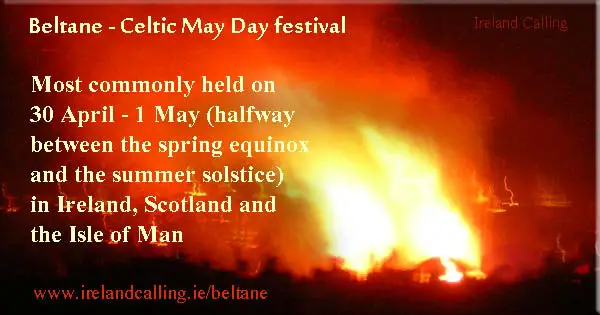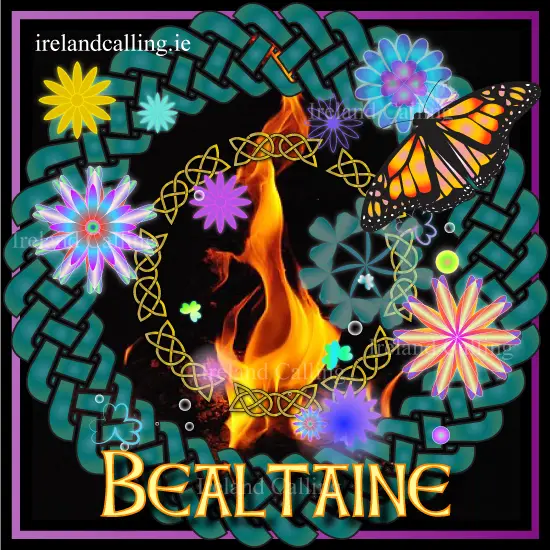The Celtic festival of Beltane (La Bealtaine), also known as May Day, is a vibrant and significant celebration that has deep roots in ancient Celtic culture. Occurring on April 30th and May 1st, Beltane marks the transition from the dark half of the year to the light half, welcoming the arrival of summer with joy, merriment, and rituals of fertility.
It was observed in Ireland, Scotland and the Isle of Man, although many European variations shared the same rituals.
In the traditional Celtic calendar, Beltane was a Cross Quarter Day – that is, it was mid-way between the Spring Equinox (when night and day were of equal length) and the Summer Solstice (the longest day giving the most hours of daylight).
The purpose of the festival was to encourage crop growth over the summer and to protect the Celtic people’s most treasured possession, their cattle.
Festival of Fire
The main ritual of Beltane was the building and lighting of bonfires. Traditionally, two large bonfires were lit and people would walk through the middle of them with their cattle ensuring that the smoke engulfed them.
Smoke from the Beltane bonfire was thought to have protective qualities, both from natural and supernatural forces. In some places cattle were taken to fairy mounds and bled as an offering, the blood would then be tasted by the herdsmen and poured into the ground where it was then burnt.
Keeping the fairies happy
Beltane is variously spelt Beltain, Bealtainne, Beltaine, Bealtaine, Beltany
The sí (fairies) were believed to be very active around Beltane and Samhain. Many of the rituals around these festivals were designed to keep the sí happy so their mischief would not harm the people or their animals.
To protect their homes, all hearth fires would be put out and embers from the Beltane fires would be used to relight them. Doors, windows and barns were decorated in bright yellow May flowers which were perhaps symbols of the fire. When the Beltane fires died down, the ash was scattered over crops as extra protection.
In some parts of Ireland, thorn bushes, which were thought to be particularly significant to the fairies, would be decorated in flowers, ribbons and coloured shells to make a May bush. This practice went on across Ireland well into the 19th century, as did the bonfires and the practice of walking cattle through them, although, by the 20th century, Beltane as a festival had largely died out.
In modern times, Beltane is still celebrated by various communities, neo-pagan groups, and individuals interested in reviving ancient Celtic traditions. Festivals and gatherings are held, where people engage in rituals, dance around the Maypole, and celebrate the season’s fertility and the beauty of nature.

